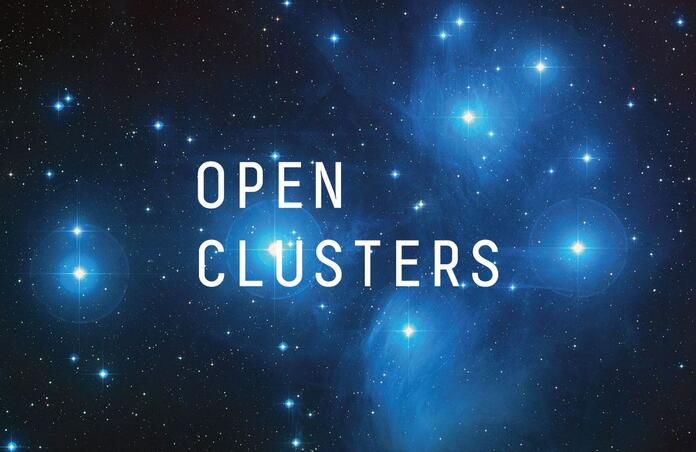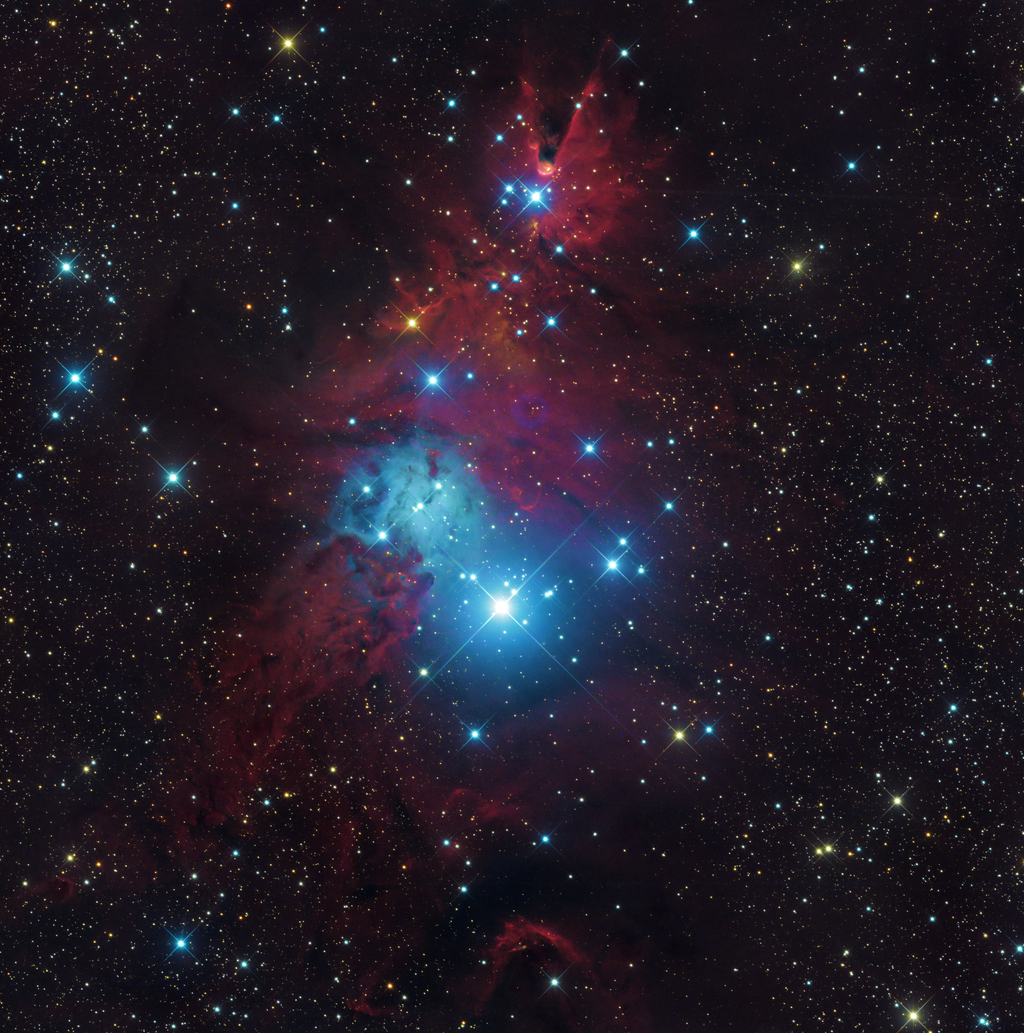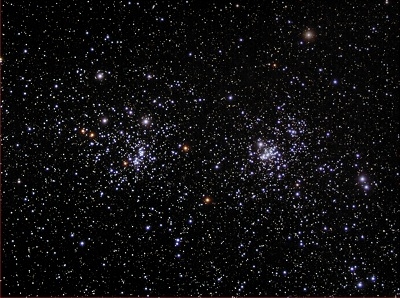What is an Open (Galactic) Cluster ?

In What is a star cluster, you mostly learned about how to observe a star cluster. Here I will tell you more about their formation and evolution.
You can observe some star clusters with the naked eye, a popular example that was already recorded in Antiquity is the Pleiades, shown again on the cover image. By pointing the first telescope at the sky, Galileo Galilei recognized that this cluster contained much more than the 6-7 recorded stars, he noted 50. After observing other clusters, he concluded that “the galaxy is nothing else but a mass of innumerable stars planted together in clusters”. We’ve already seen that we can distinguish between globular clusters, tight groups of old stars, and open clusters, which are looser and contain young stars. Open clusters therefore only occur in galaxies with a high star formation rate, i.e. spiral galaxies like our own and irregular galaxies. Between the 1870s and the 1940s, tools to measure the position and velocities of stars became available, leading to the understanding that there are indeed groups of stars which travel through space together, around the centre of their galaxy.

You will now also be familiar with the process of star-formation; they form from giant molecular clouds, but only a percentage of the new-born stars will be gravitationally bound with its neighbours, typically a third. The remaining two thirds are released in interstellar space and become part of the so-called Galactic Field Population. It’s been mentioned before that open clusters can be used to study stellar evolution as a function of mass since the stars were born at the same time, another useful application they have is measuring their distance, which can be done by considering that the stars are moving with the same speeds. In the Milky Way, there are more than 1100 clusters we know of, among which at least 10 are binary clusters – two clusters forming at about the same time and orbiting the galaxy together. The broader term Open Cluster Family designates a group of young open star clusters of about the same age located in the same region of the galactic disk.

Open clusters get dispersed over a rather quick timescale, since although their stars are gravitationally bound a small disruption can “kick” the star out of the clusters. This explains why there aren’t any open clusters near the centre of spiral galaxies, where the central black hole creates strong tidal forces. However, it was theoretically shown that it is impossible for a cluster to “evaporate” completely. Instead, binary or triple star systems get formed, as well as moving groups, which are somewhat coherent assemblages of stars that are not gravitationally bound together orbiting the galactic centre in a roughly similar manner.
The NGC 2175 cluster is waiting for you in the One-click observations, or submit your own advanced request!
Cover image: The Pleiades, NASA, ESA, AURA/Caltech
Image credits:
1 - NGC 2264 in LRGB, Astrophotography Group "Volkssterrenwacht A Pien", Ghent (Belgium) and A. Van Daele 10/12/2020 ASA 500N
2 - NGC 869 & NGC 884, M. Fulbright
